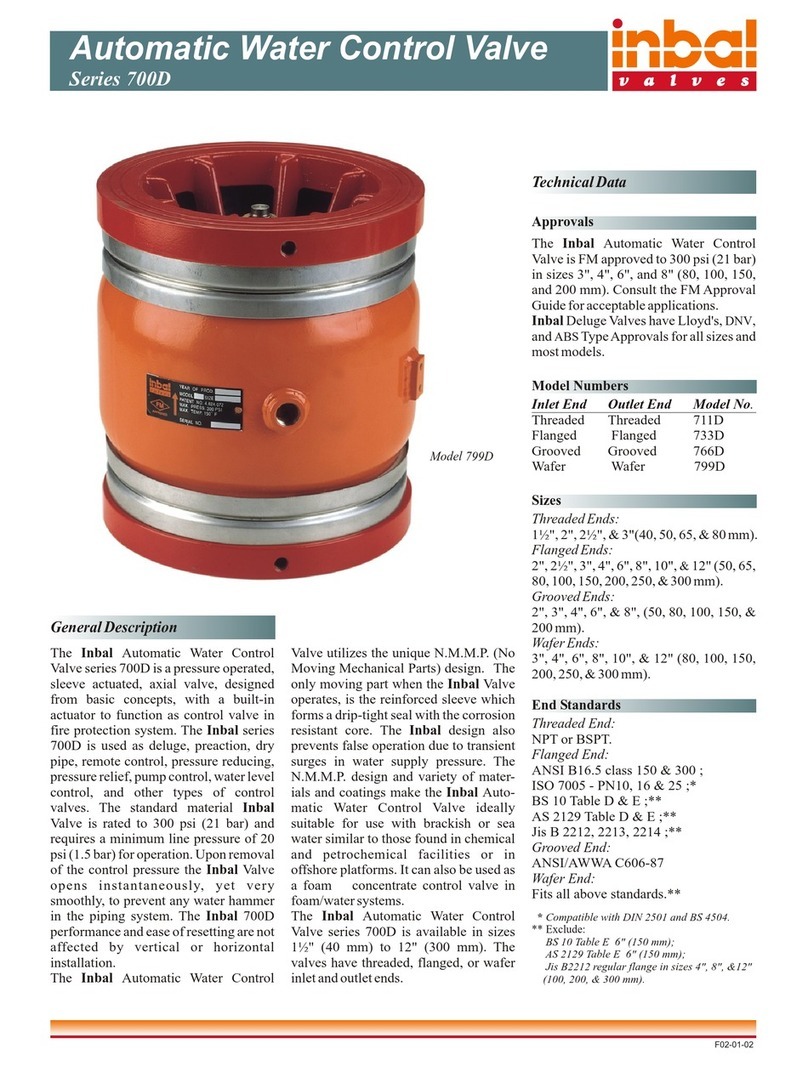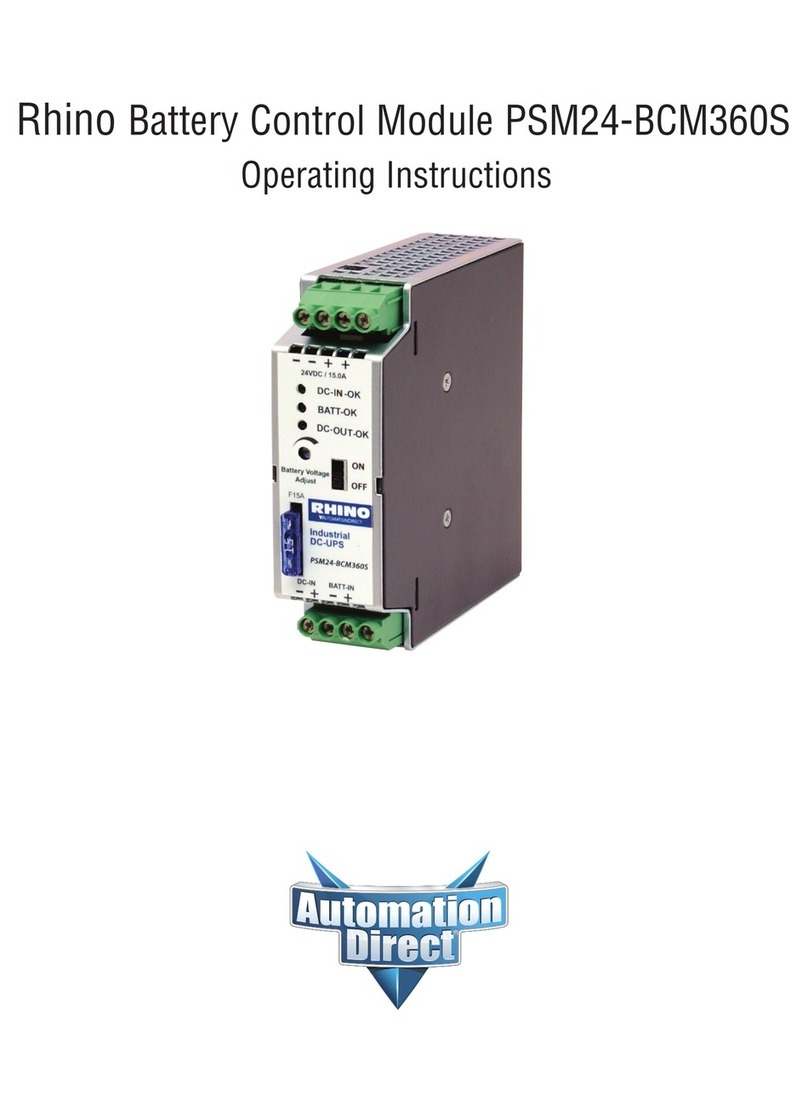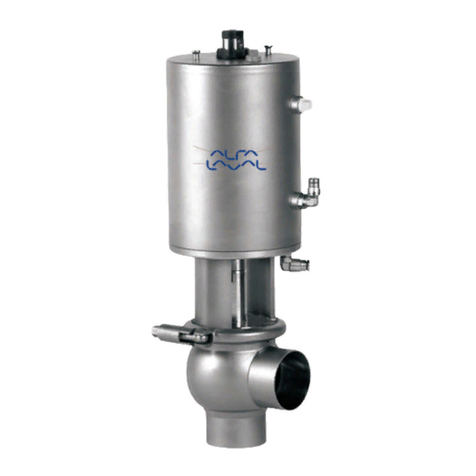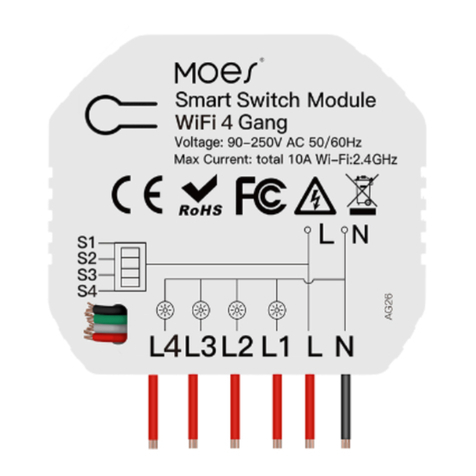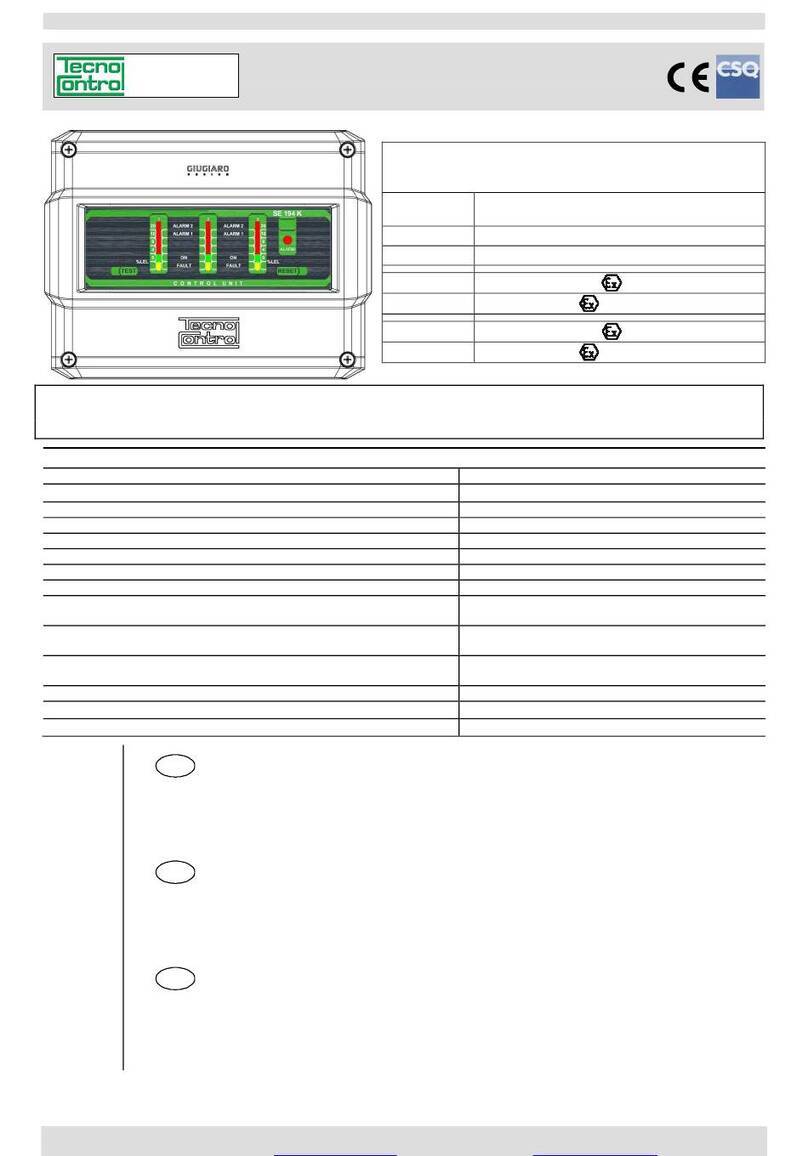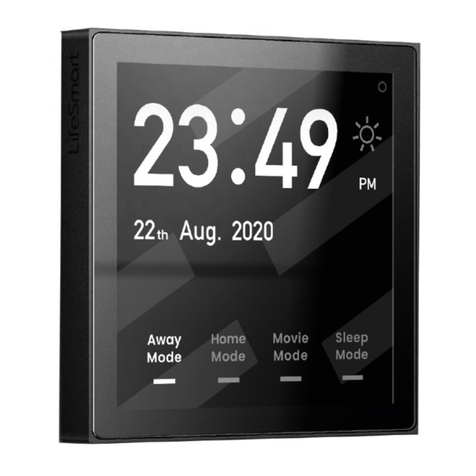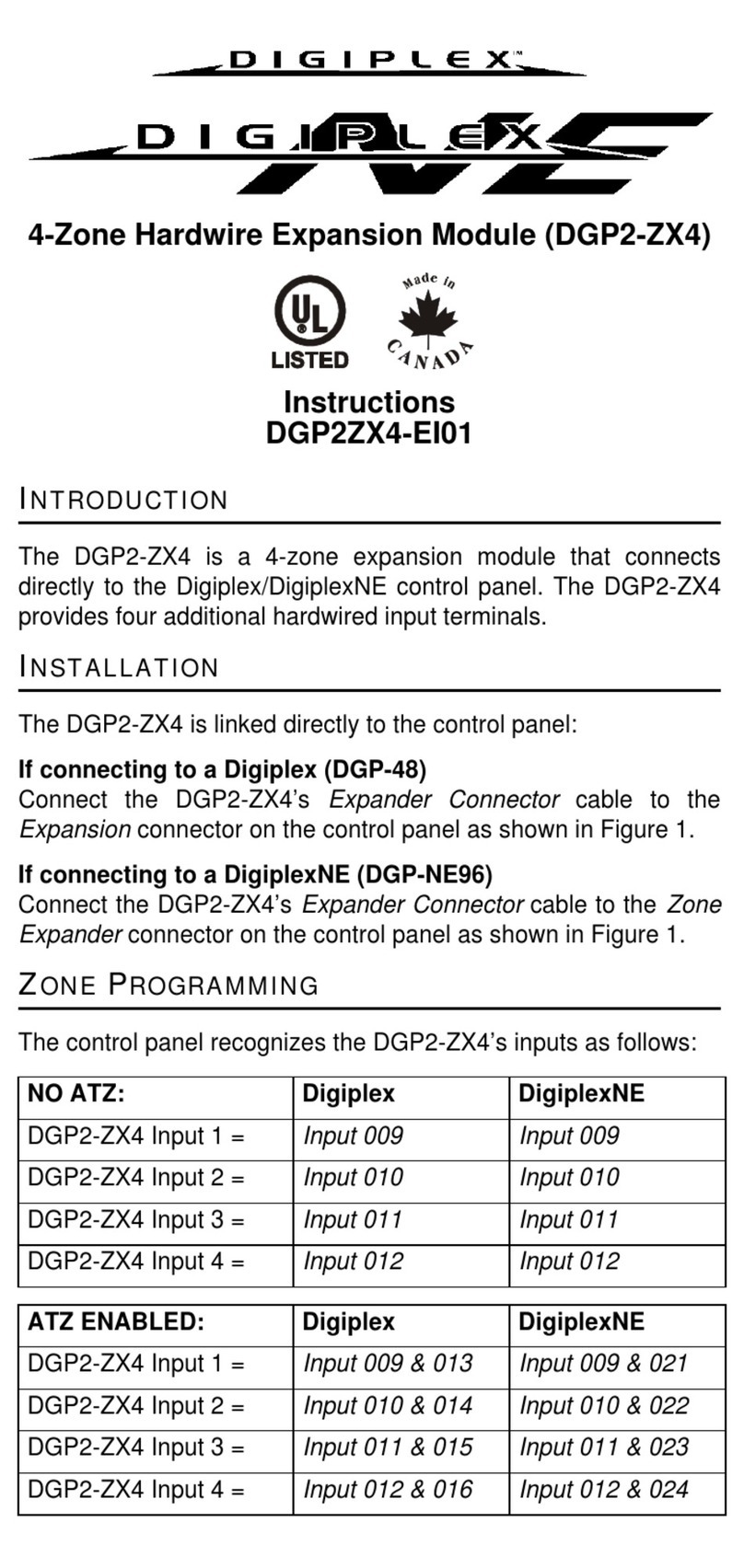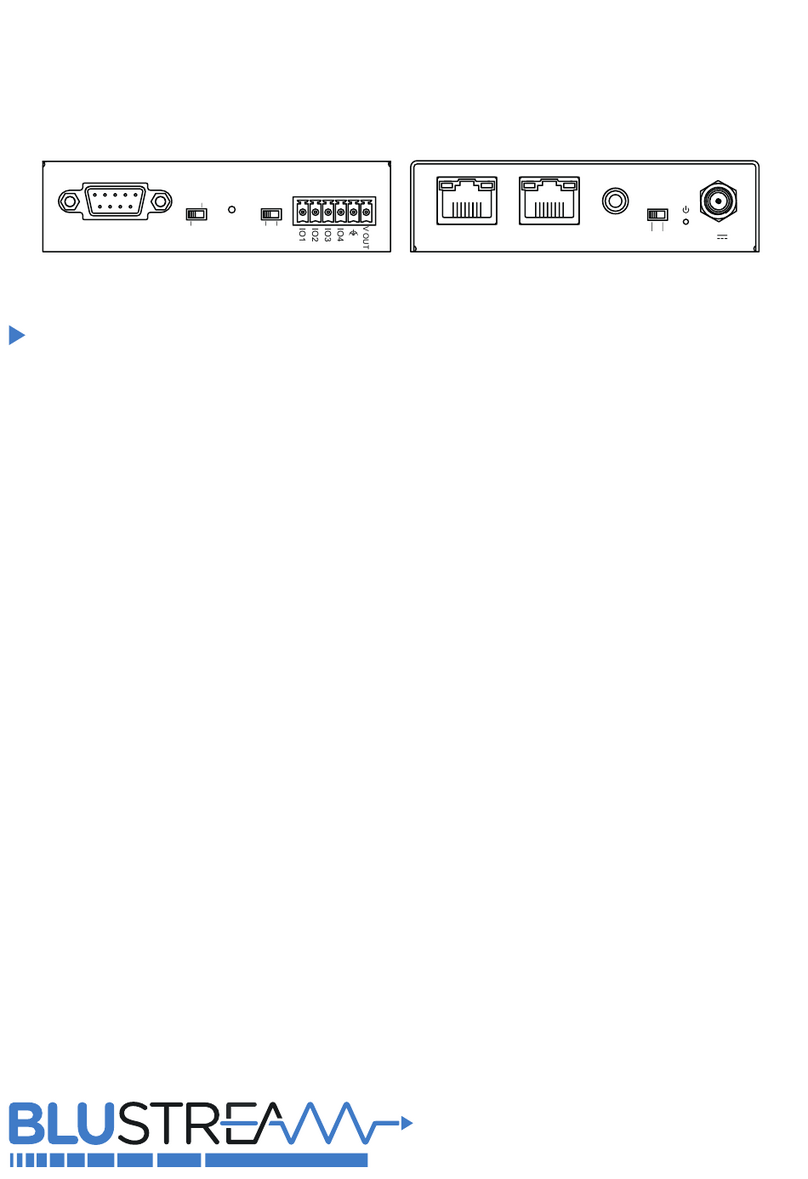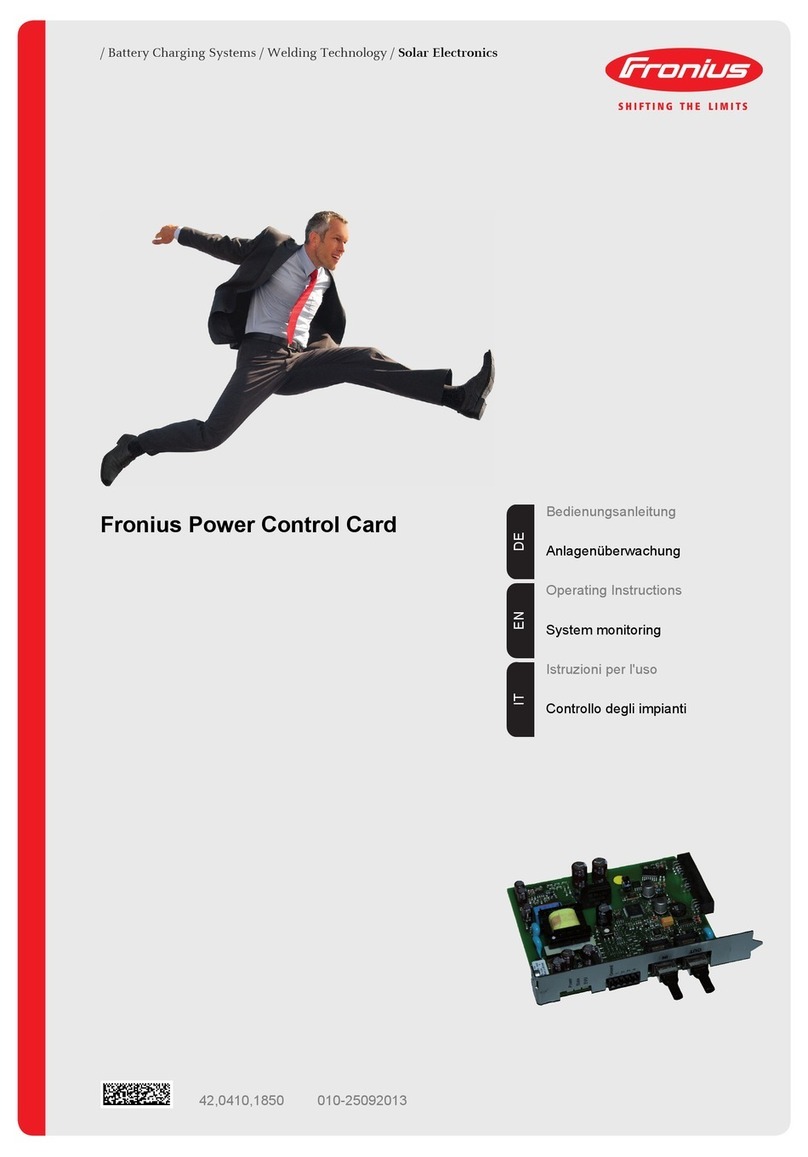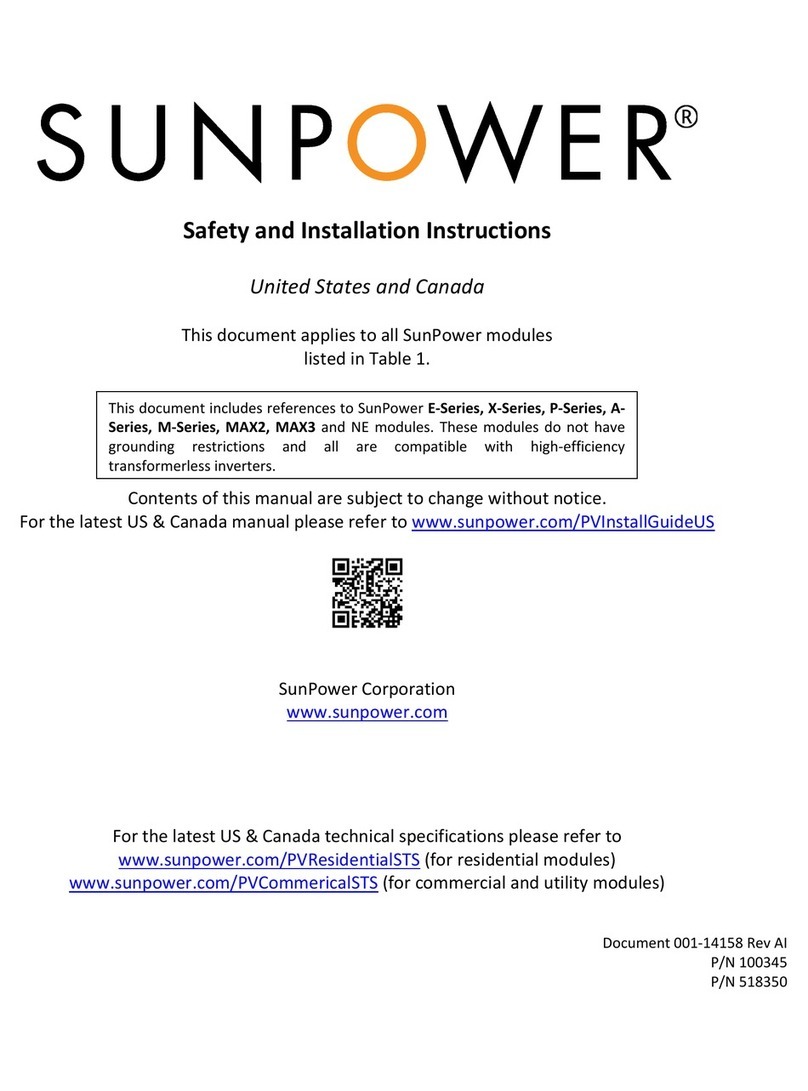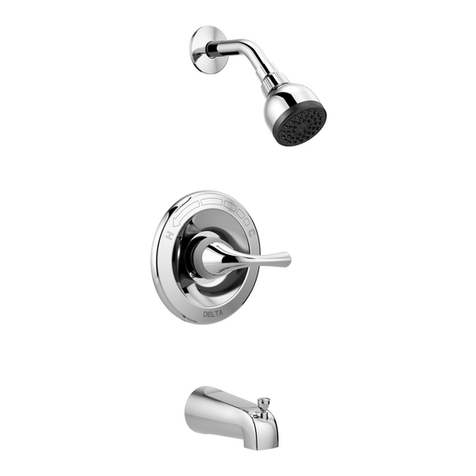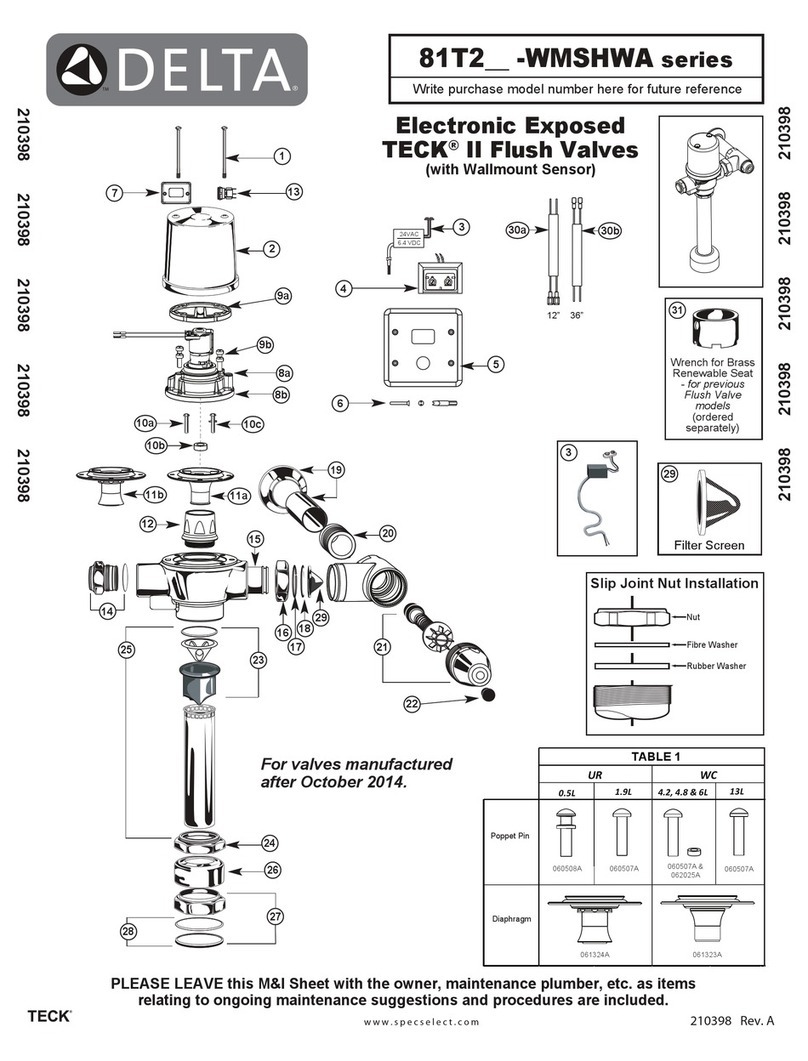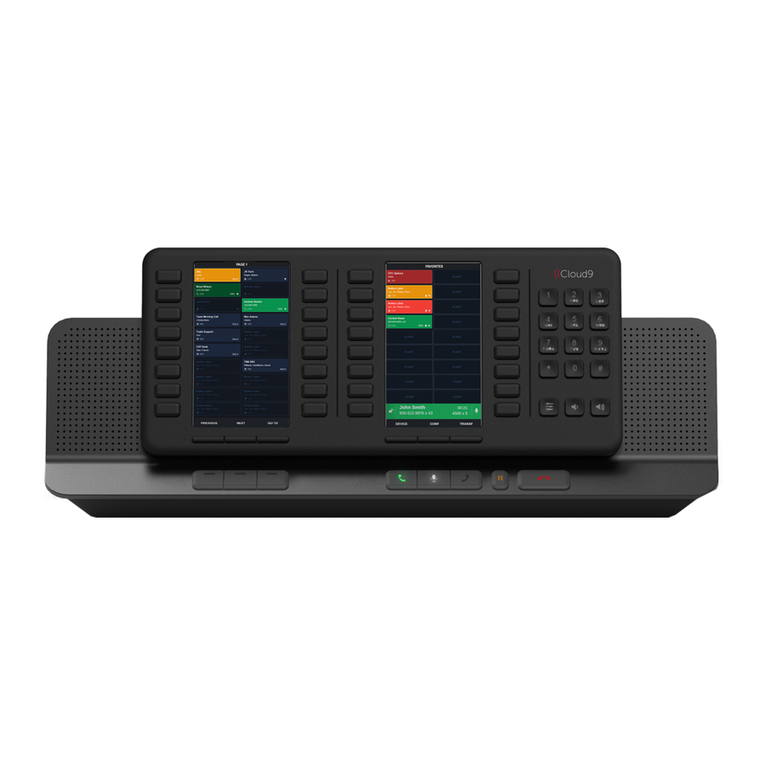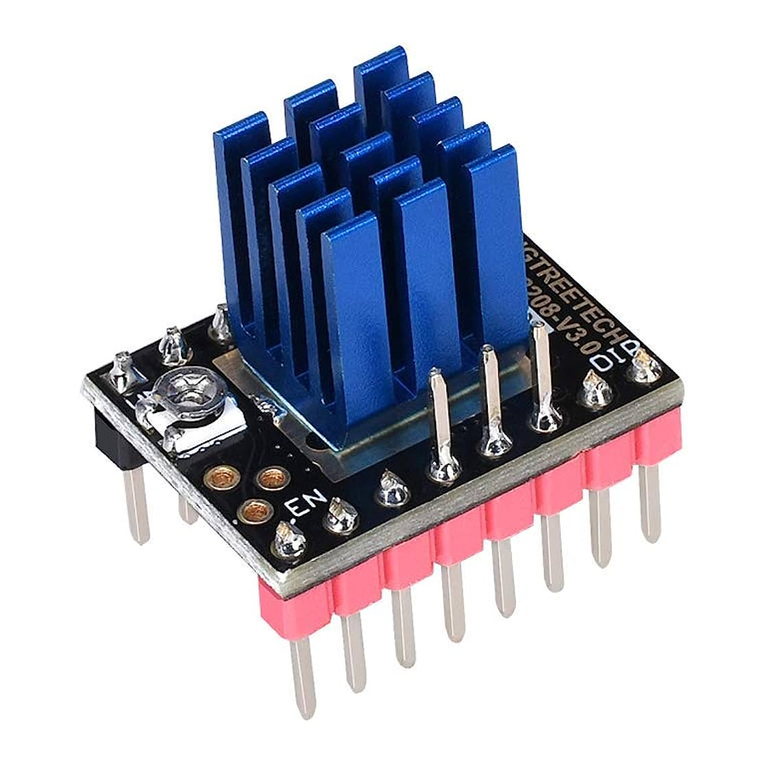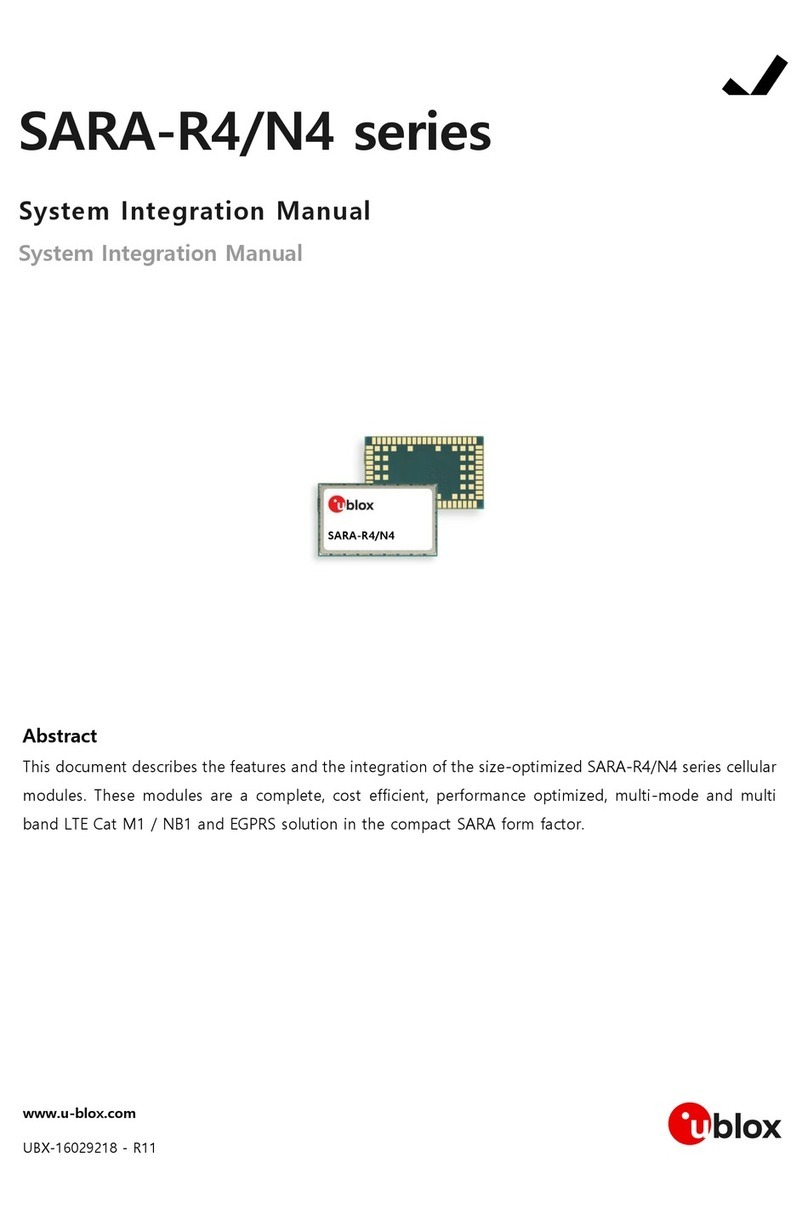Inbal Valves 700D Series User manual

General Description
The Inbal Deluge Valve with Hydraulic Actuation Trim is
specifically designed for fire protection systems actuated by
a fire detection and release system of wet pilot sprinklers
and/or hydraulic manual control. The Inbal Automatic Water
Control Valve, which is used in this deluge system, is a
pressure operated, sleeve actuated, axial valve designed
for use in fire protection systems.
The Inbal Hydraulically actuated Deluge Valve is used for
automatic or manual operation. The wet pilot line functions
as a thermal detector equipped with a fixed temperature
release. When one or more of the sprinkler heads, located
on the pilot line, fuses, or when a manual release station is
operated locally or remotely, the Inbal Deluge Valve opens
and water flows from all open sprinklers and/or nozzles on
the system. As soon as the releasing system and the
sprinkler piping are reset, the Inbal Deluge Valve resetting is
merely done by activating the reset knob.
The control trim includes all the pilot valves, accessories,
fittings, and gauges to provide for proper operation in either
vertical or horizontal installation. The standard material
Inbal Deluge Valve is rated to 300 psi (21 bar) and is
available in sizes 1½" (40 mm) to 12" (300 mm). The valves
have threaded, flanged, grooved, or wafer inlet and outlet
ends.
The only moving part in the Inbal Deluge Valve, when it
operates, is the reinforced sleeve, which forms a drip-tight
seal with the corrosion resistant core. It has a smooth
opening to prevent any water hammer in the piping system.
The unique design and variety of materials and coatings
make the Inbal Deluge Valve ideally suitable for use in
brackish or sea water, similar to those found in chemical and
petrochemical facilities or in offshore platforms. The Inbal
can also be used as a foam concentrate control valve in
foam/water systems.
F03-02-04-001
FM Approved
Inbal Deluge Valve, Hydraulic Actuation
Series 700D/DG/DX - 04/24A01 Local Resetting
Model 799DG-04A01
Page 1/6
®

Technical Data
Approvals
The Inbal Hydraulically Controlled Deluge Valve models:
711D -24A01 733D -24A01 799D -24A01
711DX -24A01 733DX -24A01 799DX -24A01
711DX -04A01 733DX -04A01 799DX -04A01
711DG-24A01 733DG-24A01 799DG-24A01
711DG-04A01 733DG-04A01 799DG-04A01
are all FM approved to 300 psi (21 bar) in sizes 2", 3", 4", 6",
8", 10" and 12" (50, 80, 100, 150, 200, 250 and 300 mm) with
threaded, flanged and wafer ends. Consult the FM Approval
Guide for acceptable applications. Inbal Deluge Valves
▪
have Lloyd's, DNV GL, and ABS Type Approvals for all
sizes.
Inlet End Outlet End Model no.
Threaded Threaded 711DX-04A01
Threaded Grooved 716DX-04A01
Flanged Flanged 733DX-04A01
Flanged Grooved 736DX-04A01
Grooved Grooved 766DX-04A01
Wafer Wafer 799DX-04A01
”DX” can be replaced with ”D” or ”DG” depends on the Inbal
Automatic Water Control Valve series in use. See bulletins
F02-01, F02-02, and F02-03.
The above model numbers refer to potable water trimmed
valves. For sea / brackish control trim, replace ”04” with
”24” for sea water;”34” ─ for foam control trim. For example:
711DX-24A01 is a threaded ends deluge valve with sea
water, hydraulically actuated control trim.
Threaded Ends:
1½", 2", 2½" & 3" (40, 50, 65 & 80 mm).
Flanged Ends:
2", 2½", 3", 4", 6", 8", 10" & 12" (40, 50, 65, 80, 100,150, 200,
250 & 300 mm).
Grooved Ends:
2", 3", 4", 6" & 8" (50, 80, 100, 150 & 200 mm).
Wafer Ends:
3", 4", 6", 8", 10" & 12" (80, 100, 150, 200, 250 & 300 mm).
Threaded End:
NPT or BSPT.
Flanged End:
1
ANSI B16.5 class 150 & 300;
1
ISO 7005 - PN10, 16 & 25;
2
BS 10 Table D & E;
Model Numbers
Sizes
End Standards
AS 2129 Table D & E;
2
Jis B 2212, 2213, 2214.
Grooved End:
ANSI/AWWA C606-87.
Wafer End:
Fits most of the above standards.
(1) - On standard
(2) - On a special request
Maximum working pressure*: 300 psi (21 bar).
* Standard material valve.
o o
Water: Max. +150 F (+65 C).
Vertical or horizontal.
Standard
Valve Housing:
Forged Steel (SAE 1021).
Valve Ends and Wafer Flow Test & Drain Ends:
Ductile Iron (ASTM A536 65-45-12).
Threaded, Flanged, and Grooved Flow Test & Drain Ends:
Carbon Steel (SAE 1020).
Sleeve:
SMR5 Elastomer reinforced with polyester and Kevlar.
Control Trim:
Brass Nickel Chrome plated Stainless Steel, and
Galvanized Steel.
Optional
Cast Steel;
Bronze;
Nickel Aluminum Bronze;
Stainless Steel AISI 316;
Super Austenitic Stainless Steel;
Super Duplex Stainless Steel;
Titanium.
Standard
Powder epoxy coated. Thickness: 0.004" (0.1 mm) external
and internal surfaces.
Optional
High built epoxy coated and polyurethane finish. Thickness:
0.01" (0.3 mm).
®
Halar coated. Thickness: 0.02" (0.5 mm).
®
Halar is a registered trade mark of Ausimont USA Inc.
2
Pressure Rating
Temperature Range
Installation Position
Materials
Coating
F03-02-04-002
Page 2/6

Water Line
To Deluge System
TO
DRAIN
TO
DRAIN
TO
DRAIN
Water
Supply
Valve
18
21a
29
32b
21b
3b
4
1
3a
1Inbal Automatic Water
Control Valve
2 Emergency Release Station
3a Test Valve
3b Trim Shutoff Valve
4 Y-Strainer
5 Flow Release Pilot (F.R.P.)
18 Automatic Drain Valves
21a Supply Pressure Gauge
21b System Pressure Gauge
29 Alarm Test Valve
32a Flow Test Valve
32b Drain Valve
Wet Pilot Line
Inspector's
Test Valve
To Water Motor
and/or Alarm Pressure Switch
Alarm
_
Schematic Control Diagram 700DG-04A01
5
18
TO
DRAIN
Control Trim
On standard, the Control Trim is supplied fully
preassembled. If self-assembly is required, all the trim
components are supplied in loose form. The complete
control trim includes the following components:
!Flow Release Pilot (F.R.P.) with a built-in check valve.
!Y- Strainer with a stainless steel screen.
!Alarm Test Valve ─ 3 way, L-port, quarter turn ball valve.
!Trim Shutoff Valve, Flow Test Valve, and Drain Valve.
!Supply and System Pressure Gauges, with dual scale (psi
and bar).
!Pressure Gauge Valves.
!Drain Cup and Drain Tubes.
!Automatic Drain Valve.
!Emergency Release Station.
Features
!No Moving Mechanical Parts (N.M.M.P.) construction
ensures a long life of dependable operation, reducing the
cost of maintenance.
!Quick, yet soft opening performance ─ eliminates water
hammer and consequent damages.
!The line pressure is sufficient to close the Inbal Valve
tightly. Can perform also, when water supply valve is not
in use.
!Optional opening and/or closing speed control is
available.
!Anti-columning device is available for long or high
elevation wet pilot line.
!Fast and easy reset by thumb activated knob.
!Supplied as standard preassembled in sections saves
the self-assembly cost.
!Remote emergency release stations can be used for
manual operation.
!Can be installed vertically or horizontally.
!Compact design ─ minimum space for valve and trim.
!Unique principle of operation prevents false operation
due to water surges.
!Pressure rating to 300 psi (21 bar) for standard material
valve.
F03-02-04-003
2
TO DRAIN
Page 3/6
32a
TO
DRAIN

!Wide range of sizes for an ideal system design.
!Control trim made of high grade materials as standard.
!Epoxy coating supplied as standard ─ ensures excellent
corrosion resistance.
!Variety of available materials ─ to ensure corrosion-free
service even under severe conditions.
!The same basic trim is compatible with electric,
pneumatic, and/or hydraulic release.
!Additional functions, such as pressure control or another
release system, could be added on the same valve body.
The Control Chamber of the Inbal Automatic Water Control
Valve is the annular space between the valve Housing and
the Sleeve. The valve is held in a closed position as long as
inlet pressure is maintained in the Control Chamber.
The wet pilot line, equipped with closed sprinkler heads, is
pressurized through the valve trim and located over the
protected area. The wet pilot line serves the dual purpose of
thermal detection and release system.
In the set position, water pressure is applied to the Control
Chamber of the Inbal Deluge Valve and to the hydraulic
release system from the upstream of the Water Supply
Valve. Consequently, the Inbal Deluge Valve stays closed.
Operation
The Inbal Deluge Valve opens wide when one or more of the
sprinklers installed on the wet pilot line fuses and water
pressure is allowed to vent, or when a hydraulic manual
release opens. Either one of these operations releases
water from the Inbal Control Chamber. The Inbal Deluge
Valve opens fully introducing a flow of water to the system
while activating the system alarm devices. Water will flow
from any open sprinklers and/or spray nozzles on the
system. The operation of the Inbal Deluge Valve and the
flow released from the Control Chamber activate the Flow
Release Pilot (F.R.P) to latch in an open position, isolating
the Control Chamber from the inlet water supply. The F.R.P
operation prevents the Inbal Deluge Valve from closing
even if the open releasing wet pilot line closes. The Inbal
Valve will close only when the Resetting procedure is
followed.
The maximum elevations in which the wet pilot sprinklers or
manual release stations can be installed are shown on
Graph (1).They are presented in relation to the various
lengths of pilot lines and to the water supply pressure.
The Emergency Release Valve is used for emergency
actuation of the Inbal Deluge Valve and for routine testing.
300 psi
120 140 160 180
WATER SYSTEM PRESSURESUPPLY
821 bar
9 10 11 12
820 ft (250 m)
1475 ft (450 m)
660 ft (200 m)
Up to 575 ft (175 m)
990 ft (300 m)
1650 ft (500 m)
1310 ft (400 m)
1150 ft (350 m)
Based on ½'' (15 mm) Schedule 40 pipe
280
If the maximum elevation of hydraulic release piping exceeds the limits shown on the graph, use anticolumning device model 395-08 (see bulletin F40-14-01).
20
MAX. ELEVATION OF WET PILOT LINE
m H O
2ft H O
2
0
10
20
30
40
0
30
60
90
120
150
604020 80 100
5
23467
Pilot Line
Equivalent
Length
Graph (1)
Wet Pilot Line - Design Data
F03-02-04-004
Page 4/6

F03-02-04-005
Installation
Refer to the Trim Chart applicable to the specific Inbal
Deluge Valve model in use.
1. When the Inbal Deluge Valve is delivered, carefully
unpack and visually check that there has been no
damage to the operating components, piping, and
fittings.
2. Always flush the pipelines before installing the Inbal
Valve.
3. Place the Inbal Valve in the piping at the outlet of the
Water Supply Valve. Verify that the arrow on the valve
Housing matches the actual flow direction. Determine
which side the system will be accessed from and locate
the Inbal Deluge Valve accordingly.
4. Install the Inbal Deluge Valve in the pipeline. Use
gaskets, bolts, stud bolts, bolt sleeves, and nuts as
required by the valve ends.
5. The Control Trim is supplied fully preassembled. Refer to
the applicable Trim Chart and Installation Guide.
6. The water pressure supply to the control trim must
always be sourced from the inlet of the Water Supply
Valve through a ½" pipe.
7. Connect the wet pilot line to the Flow Release Pilot
(F.R.P.). Refer to Graph (1) which shows the maximum
elevations above the Deluge Valve at which the release
line (pilot sprinklers or manual release) should be
installed. An Anti-columning Device is required when the
release line elevation exceeds the figure corresponding
to the minimum water supply system pressure in which
the Inbal Deluge Valve is planned to perform.
8. It is recommended to install an inspector's test valve on
the hydraulic release system. The inspector's test valve
is a locked closed ball valve with an outlet end orifice
equivalent to the smallest orifice of the releasing device
provided on the system. The inspector's test valve may
be used to verify adequate operation of the deluge
system when a releasing device operates.
9. Set the Inbal Deluge Valve by following the Resetting
procedure.
10.Test the Inbal Valve, the trim, and the alarms according
to the Testing procedure.
Resetting
Maintenance, Inspection, & Testing
The Inbal Deluge Valve system must be reset and restored
to service as soon as possible after automatic, emergency,
or manual actuation.
The procedure is as follows:
1.Close the Water Supply Valve. Water flow alarms are
reset.
2.Close the Trim Shutoff Valve.
3.Open the Flow Test Valve and Drain Valve, allowing all
the water to drain.
4.Inspect and replace any portion of the detection system
subjected to fire conditions.
5.Inspect the trim and alarm Y-Strainers. Clean if
necessary.
6.Verify that the Emergency Release Valve is in a closed
position.
7.Open the Trim Shutoff Valve. Push and hold the reset
knob on the F.R.P. and allow water pressure to build up in
the trim and in the Inbal Valve Control Chamber. Wait
and verify that the pressure readings on both pressure
gauges are equal.
8.Release the reset knob on the Flow Release Pilot (F.R.P).
9.Close the Flow Test Valve.
10. Fully open the Water Supply Valve. Verify that there is no
flow from the Drain Valve, downstream of the Inbal
Valve.
11. Close the Drain Valve.
It is recommended that periodic inspections and tests be
conducted by qualified personnel to ensure that the Inbal
Deluge Valve and related equipment are in good operating
condition. The inspection and testing activities should be
done according to NFPA Standards, the guidelines and
regulations of the authorities having jurisdiction, and the
following instructions. It is recommended that the Deluge
Valve be tested, operated, cleaned, and inspected at least
on a routine basis.
A weekly Inspection is recommended:
1. Verify that the Water Supply Valve is sealed in fully open
position.
2. Verify that the required water pressure is being applied to
the Inbal Deluge Valve inlet and trim.
3. Verify that the Trim Shutoff Valve, Alarm Test Valve,
Inspection
Page 5/6

Emergency Release Valve, Pressure Gauge Valves, Flow
Test Valve, and Drain Valve are in set position.
4. The Supply and System Pressure Gauges should be
checked for accuracy.
5. Visually inspect for broken or missing parts, or other
evidence of impaired protection.
A quarterly Strainer Cleaning is recommended:
1. Close the Trim Shutoff Valve.
2. Remove the covers of the trim and alarm Y- Strainers.
Clean if necessary.
3. Open the Trim Shutoff Valve.
A quarterly Alarm Testing is recommended:
1. Test the Water Motor Alarm or Alarm Pressure Switch by
opening the Alarm Test Valve.
2. Water Motor Alarm should be audible. Alarm Pressure
Switch should activate.
3. Close the Alarm Test Valve. All local alarms should stop
sounding and pressure switch is reset.
4. Verify that the supply piping to the alarm drains properly.
A semi-annual Deluge Trim Testing is recommended.
Testing of the control trim is conducted with no flow of water
to the system.
1.Open the Flow Test Valve to flush away debris or foreign
particles which may have accumulated in the Inbal
Deluge Valve inlet.
2.Close the Flow Test Valve.
3.Close the Water Supply Valve installed in the inlet of the
Inbal Deluge Valve.
4.Open the inspector's test valve in the hydraulic release
system. Water should be drained from the deluge trim.
Verify that the pressure reading on the System Pressure
Gauge drops to zero which simulates an open position of
the Inbal Deluge Valve.
5.Reset the valve by performing the instructions in
Resetting.
Strainer Cleaning
Alarm Testing
Deluge Trim Testing
Trip Testing
Removal
An annual Trip Testing is recommended. Performing the Trip
Testing will cause water to flow from all open sprinklers
and/or nozzles. Prevent damage by taking necessary
precautions.
1. Open the Flow Test Valve to flush away any debris or
foreign particles which may have accumulated in the
Inbal Deluge Valve inlet.
2. Close the Flow Test Valve.
3. Trip the Inbal Valve to open by either:
a) Opening the inspector's test valve.
b) Opening the Emergency Release Valve.
The water in the Inbal Valve Control Chamber is released
to the atmosphere. The Inbal Deluge Valve will open wide
and water will flow to the system. All the water flow alarms
should operate. Verify that the whole system is working
properly.
4. Close the inspector's test valve or the Emergency
Release Valve.
5. Reset the valve by performing the instructions in
Resetting.
To remove the Inbal Deluge Valve:
1. Close all the pressure supplies:
a) Water Supply Valve.
b) Trim Shutoff Valve.
2. Open the Emergency Release Valve to release the water
pressure from the Inbal Valve Control
Chamber.
3. Open the Flow Test Valve and Drain Valve to allow all the
water to drain.
4. Disconnect the union and remove the trim from the valve.
5. Remove the Inbal Valve from the line for inspection.
6. To reinstall, follow the Installation procedure (use new
gaskets for flanged or wafer valve).
The Data Sheet for Inquiries/Orders (bulletin F01-05) should
be submitted.
Inquiries/Orders
July 2016 / F03-02-04-006
FM Approved
Inbal Deluge Valve, Hydraulic Actuation
Series 700D/DG/DX - 04/24A01 Local Resetting
Page 6/6
®
The information contained in this document is subject to change without notice. Mil Inbal Valves Ltd shall not be liable for any errors, omissions or amendments contained herein
Copyright by Mil Inbal Valves Ltd. All rights reserved© Inbal Valves® is a registered trademark
This manual suits for next models
20
Table of contents
Other Inbal Valves Control Unit manuals

